Best Foot Forward: Jumble Hole and Colden Clough
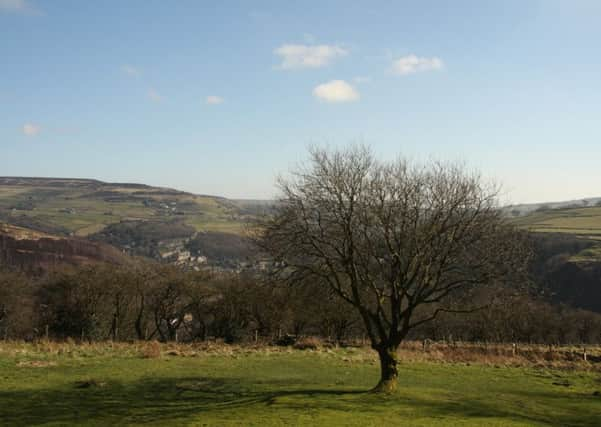

Distance: 5.5 miles (8.8km)
Minimum time: 3hrs
Ascent/gradient: 722ft (220m)
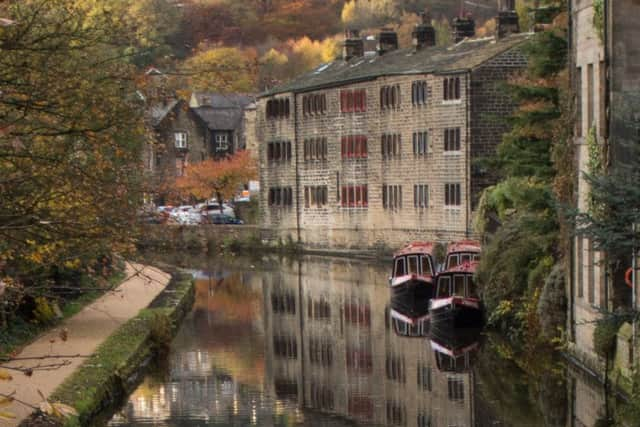

Level of difficulty: Medium
Paths: Good paths, 13 stiles
From the centre of Hebden Bridge, walk along Holme Street to the Rochdale Canal.
Go right to follow the tow path beneath two bridges, past the Stubbing Wharf pub and beneath a railway bridge.
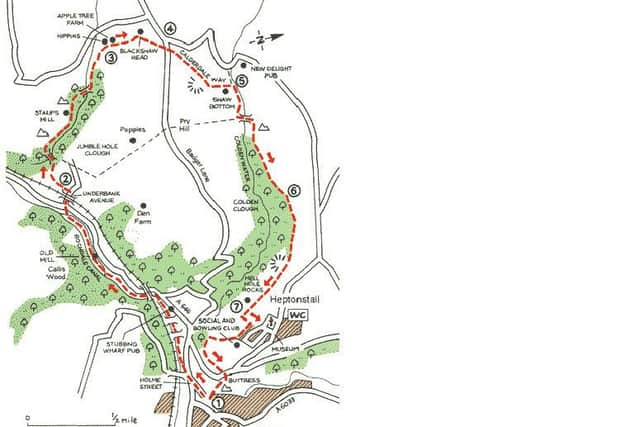

Advertisement
Hide AdAdvertisement
Hide AdBeyond the bridge the canal broadens; 200yds (183m) further on and before the next bridge, bear right and join a track right, to the A646.
Cross the road and bear right for just 75yds (68m) to take Underbank Avenue, on the left, through an arch. Bear left again, past houses, to where another road comes through the viaduct.
Go right on a track past a mill, and follow the beck up into the woodland of Jumble Hole Clough.
Beyond a ruined mill, leave the track and bear left to cross the beck.
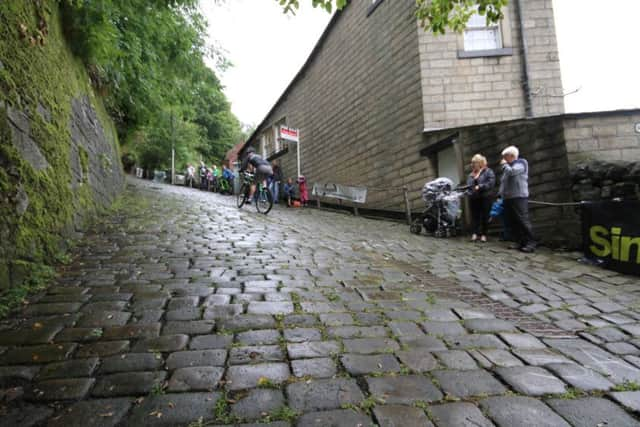

Beyond a hairpin bend, climb steeply, passing a dam.
When the track wheels left, keep ahead, now above the beck.
Advertisement
Hide AdAdvertisement
Hide AdTake a gate and cross the bottom of a field, to re-enter woodland.
Keep ahead uphill, to a gap in a fence. Walk downhill, past the ruins of Staups Mill, then steeply up to cross a bridge.
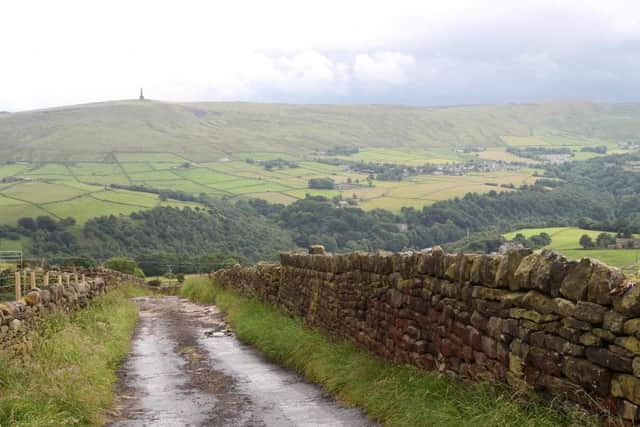

Take steps and cross a field to a waymark. Keep left, following a wall to a gate in front of Hippins.
Join the Calderdale Way, bearing right up a track between farm buildings to a stile.
Advertisement
Hide AdAdvertisement
Hide AdFollow a path to the next stile; then between a fence and a wall.
Cross the track to Apple Tree Farm, to follow a line of causeway stones across three more stiles, passing to the right of a cottage.
Cross the field to a gate at the right corner, then follow a causeway over a stile, and along a track to Blackshaw Head.
Go right, along the road, for 20yds (18m), to take a gate on the left.
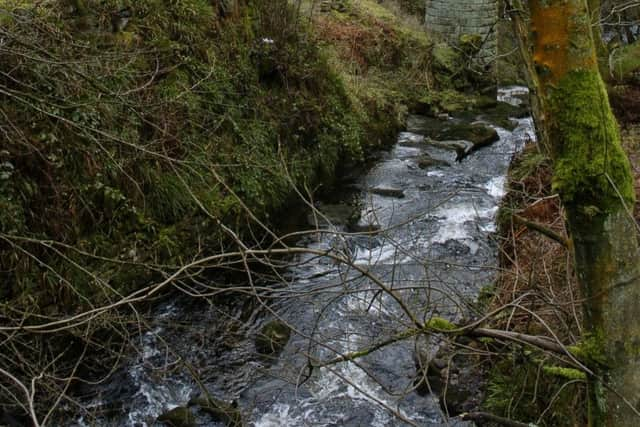

Advertisement
Hide AdAdvertisement
Hide AdBear half right across the field to a stile, then follow the right edge of the next field.
Cross four more fields, and stiles, to a gate. Go left down a path, to Shaw Bottom.
Keep left of the house to a metalled track.
Go right, along the track. When the track bears left, keep ahead on a stony track.
Look out for a small marker post; go left here, steeply down steps, and cross Colden Water on a stone bridge.
Advertisement
Hide AdAdvertisement
Hide AdClimb up the other side, to follow a causeway to the right, at the top of woodland.
At the second stile bear slightly left to keep following the causeway stones; your route is clear, through gates and stiles, as Heptonstall comes into view. Keep right at a crossing of tracks, passing to the left of a house. Keep straight ahead, on a walled path downhill, at the next crossing of tracks, by a bench. Keep left at the next fork to meet a road.
Go left here, uphill; just before the road bears left, take a gap in the wall to the right.
From here your path meanders through woodland (it’s a bit of a scramble in places).
Advertisement
Hide AdAdvertisement
Hide AdEmerge from the woodland, and follow a wall to Hell Hole Rocks.
Bear left at a wall-end, and cross an access road. At the junction turn right.
Go right, on a walled path and follow the wall to your left, downhill, soon through a spur of woodland and on to a track round to the left.
Past houses you come to a road junction. Go left for 50yds (46m) and take the paved track right.
Advertisement
Hide AdAdvertisement
Hide AdThis is the Buttress, taking you steeply down into Hebden Bridge.
This walk links the little town of Hebden Bridge with the old hand-weaving village of Heptonstall, using sections of a waymarked walk, the Calderdale Way. The hill village of Heptonstall is by far the older settlement and was, in its time, an important centre of the textile trade.
A cursory look at a map shows Heptonstall to be at the hub of a complex network of old trackways, mostly used by packhorse trains carrying wool and cotton. And Heptonstall’s Cloth Hall, where cloth was bought and sold, dates back to the 16th century.
At this time Hebden Bridge was little more than a river crossing on an old packhorse causey.
Advertisement
Hide AdAdvertisement
Hide AdHeptonstall’s importance came at the time when textiles were, literally, a cottage industry, with spinning and weaving being undertaken in isolated farmhouses.
When the processes began to be mechanised, during the Industrial Revolution, Heptonstall, with no running water to power the waterwheels, was left high and
dry.
As soon as spinning and weaving developed on a truly industrial scale, communities sprang up wherever there was a ready supply of running water.
So the town of Hebden Bridge was established in the valley, at the meeting of two rivers: the Calder and Hebden Water.
Advertisement
Hide AdAdvertisement
Hide AdThe handsome 16th-century packhorse bridge that gives the town its name still spans Hebden Water.
At one time there were more than 30 mills in Hebden Bridge, their tall chimneys belching thick smoke into the Calder Valley.
It used to be said that the only time you could see the town from the surrounding hills was during Wakes Week, the mill-hands’ traditional holiday.
The town’s speciality was cotton: mostly hardwearing fustian and corduroy. With Hebden Bridge being hemmed in by hills, and the mills occupying much of the available land on the valley bottom, the workers’ houses had to be built up the steep slopes.
Advertisement
Hide AdAdvertisement
Hide AdAn ingenious solution to the problem was to build ‘top and bottom’ houses, one dwelling on top of another.
They can be viewed to best effect on the last leg of the walk, which offers a stunning birds-eye view over the town.
Few looms clatter today and Hebden Bridge has reinvented itself as the ‘capital’ of Upper Calderdale, as a place to enjoy a day out.
The town is known for its excellent walking country, bohemian population, trips along the Rochdale Canal by horse-drawn narrowboats and its summer arts
festival.
Advertisement
Hide AdAdvertisement
Hide AdJumble Hole Clough is a typical South Pennine steep-sided, wooded valley.
Though a tranquil scene today, this little valley was once a centre of industry, with four mills exploiting the fast-flowing beck as it makes its way down
to join the River Calder.
You can see remains of all these mills, and some of their mill ponds, on this walk; but the most intriguing relic is Staups Mill, now an evocative ruin, near the top of Jumble Hole Clough.